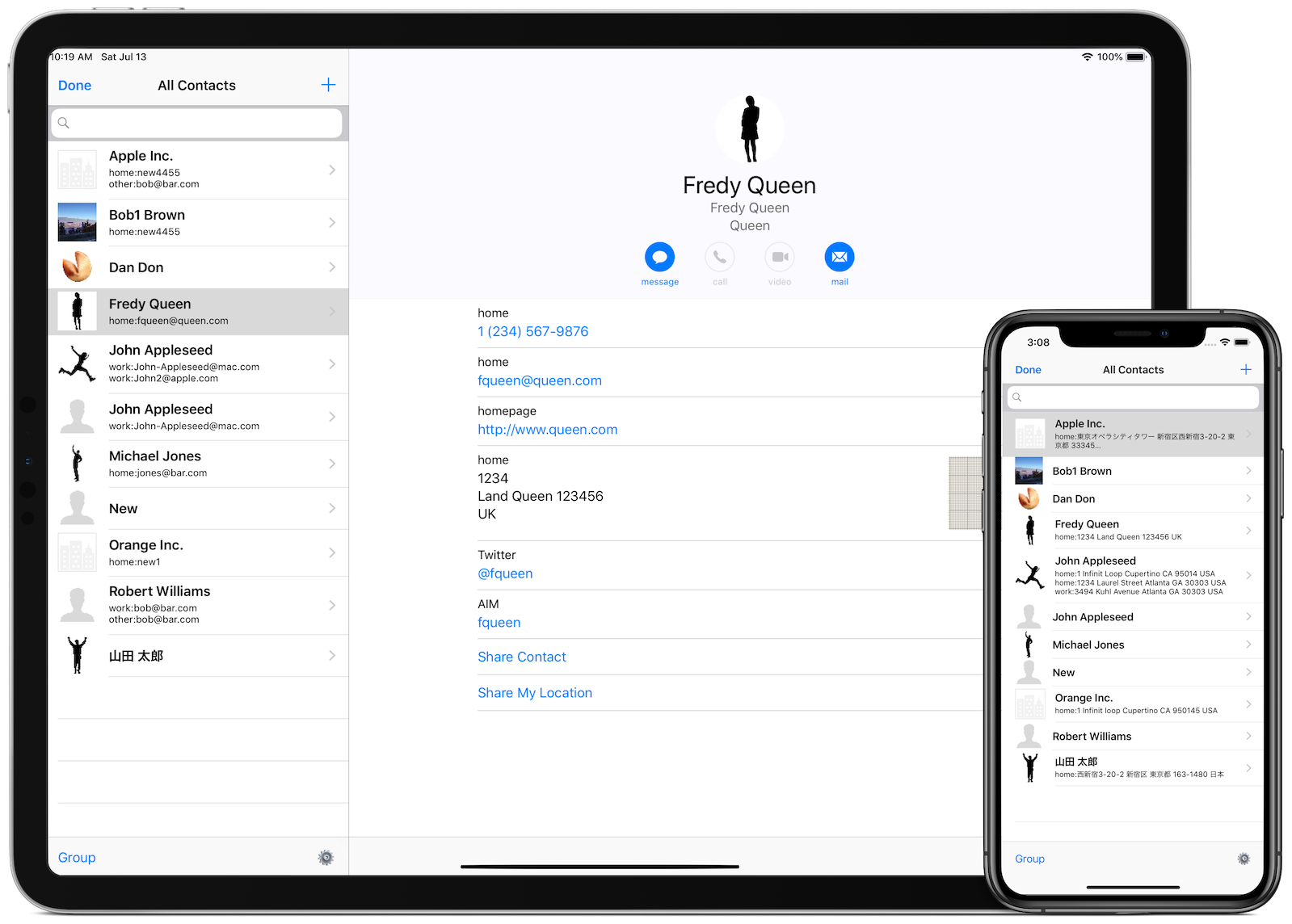What's New
Jun 17, 2025 vCard Editor2 3.5.6 is released.
- Stability improvements and bug fixes.
May 28, 2024 vCard Editor for iOS 1.1.6 is released.
- Fixed an issue where the app would sometimes crash when changing the Country of Address.
Feb 12, 2024 What is the difference between vCard Editor2 and vCard Editor
Jul 15, 2021 Bulk change function of vCard Editor2.
Nov 29, 2018 Find duplicate contacts by sort function.
vCard Editor2 for Mac
vCard Editor2 is an application to create and edit vCards directly, especially focusing on editing vCard.
This application lists multiple contacts in a table style, and has various functions for editing such as setting labels and values for each item, sorting by item, searching and replacing by keyword. You can also change the items of multiple contacts at once.
A vCard is a file with a vcf extension, and not only Apple's Contacts app, but various contact applications have functions to export and import vCards, and to exchange contact information between apps. will be used.
With this app, you can edit the contact information exported to the vCard file from the Apple Contacts app, restore it to the Apple Contacts app, or use it as a backup. You can also use the vCard file as a second address book using this application.
And this application doesn't communicate with outside servers using the Internet except for iCloud. The Contacts data is only used inside of the app and never be sent to any servers.
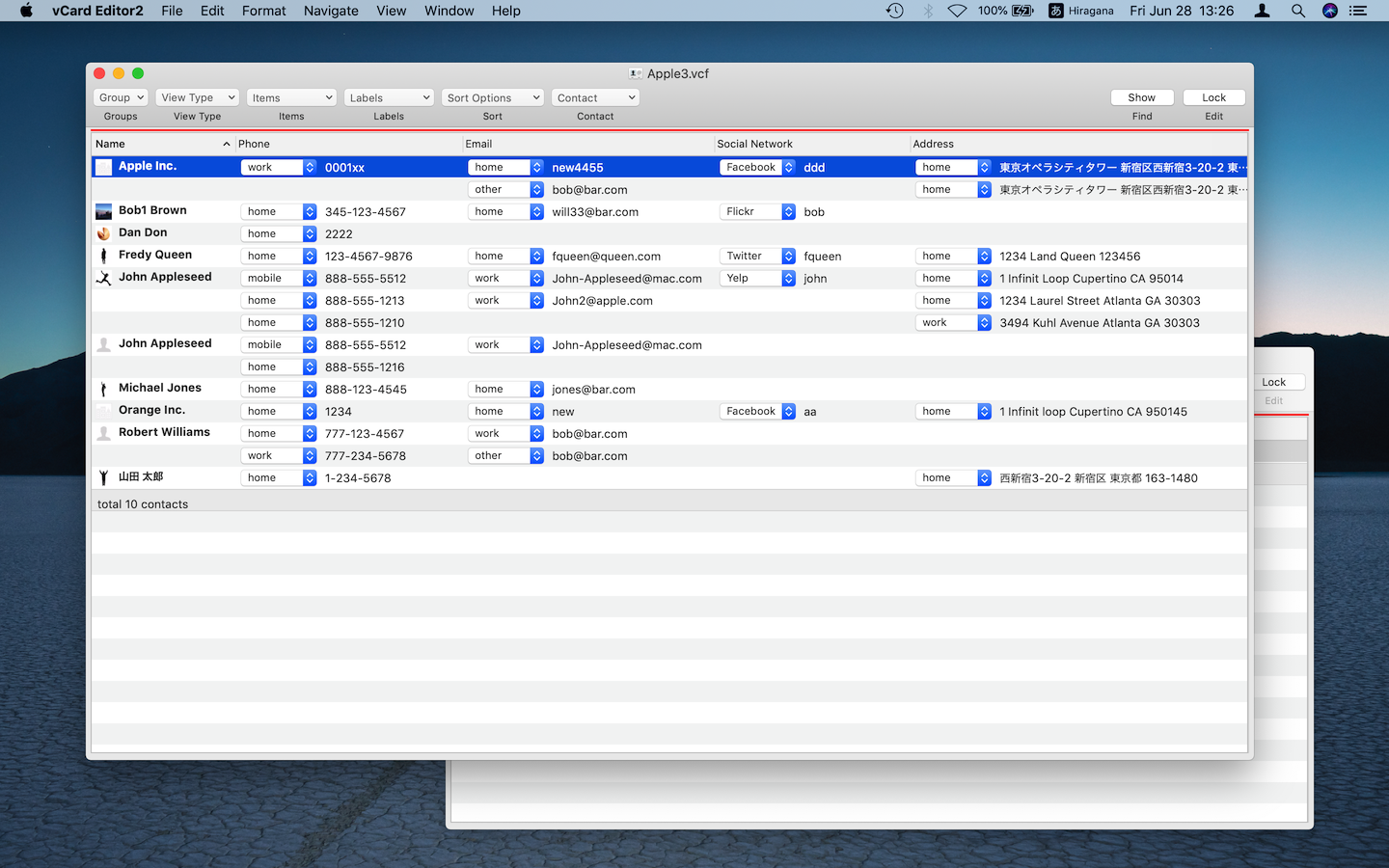
Functions
- Creating and Reading vCard files
- Reading CSV files and exporting contacts as CSV
- Import from vCard for inserting contacts
- Sorting in a column
- Find and Replace
- Comparing arbitral two contacts and copy/move between them
- Detachable Contact Info
- Action and Substitution by a context menu
- Input Address
- Bulk edit function in the selected multiple cells
- Showing QRCode in various formats
- Drag and Drop Contacts
- Register Custom Items
- Adding Custom Label
Addtional Info about Functions.
Creating and Reading vCard
vCard Editor2 is an application for creating and editing vCards.
The available vCard format is vCard2.1 and later. If you open a file of vCard format before 3.0, you may need to select a text encoding. There is the option button in the Open Panel as below.

Spread Sheet style
The data in the vCard file is shown like the following table.
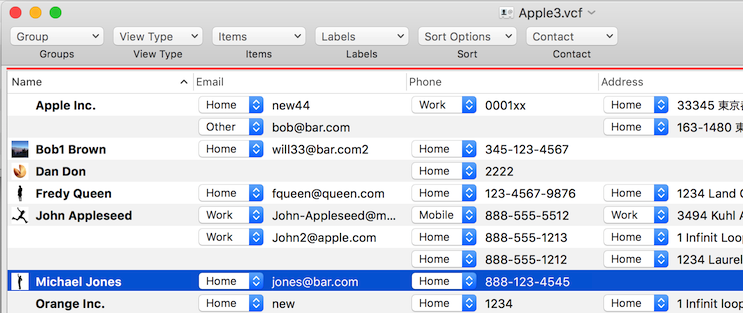
You can select the View Type by the menu as below. When you select "Address", the Name and Address columns are shown. The itmes menu can be used to add columns to see other values.
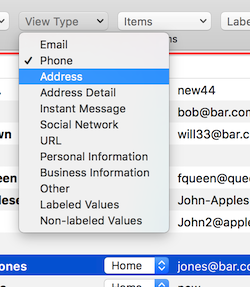
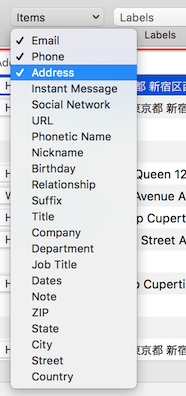
Edit vCard
To edit the vCard file, please click the edit button at the left in the Toolbar. Or select the "Edit Document" menu in the Navigator menu. Then a red line under the title bar is shown.
Then double-click the cell to edit the string in the cell, the text field in the cell will turn to editing mode.
If the cell has a label, the editing panel for the cell will open when you double-click the cell. If you double-click the cell with holding the command key, the list panel will open. The panel can be used to add/delete a labeled value too.

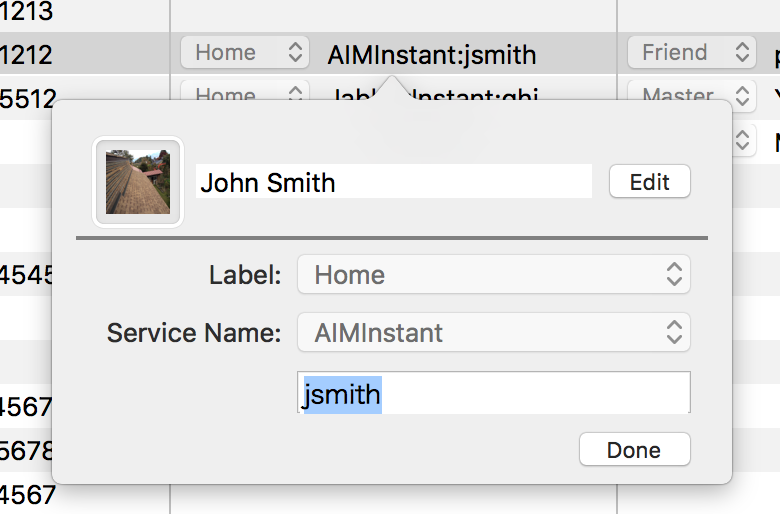
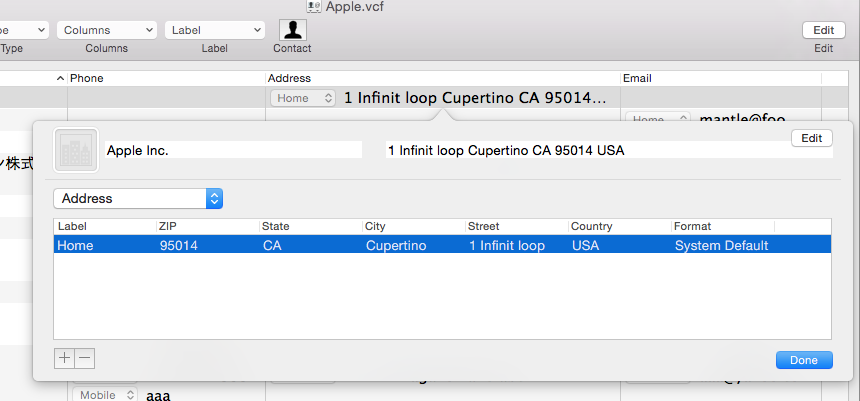
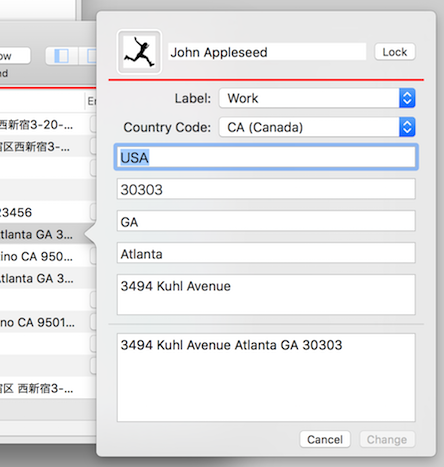
Reading CSV files and exporting contacts as CSV
vCard Editor2 can read a CSV file and export contacts to the CSV file.
You can open a CSV file as same as a vCard file through the open menu. However you can not edit the CSV file directly, but can drag&drop the contact to the other vCard document.vCard Editor2 expects the items in a CSV file are ordered as the following keywords. If the file has a line at the beginning to designate the items order, the items are read as the specified order.
Please check the sample file if you want to add the items list.
Name,Home Phone,Work Phone,Other Phone,Home Email,Work Email,Other Email,Home ZIP,Home State,Home City,Home Street,Work ZIP,Work State,Work City,Work Street,Other ZIP,Other State,Other City,Other Street,Birthday,Title,Company,Department,Job Title,First Name,Last Name,Nickname,Note,Facebook,LinkedIn,Flickr,SinaWeibodownload the sample csv Sample CSV File
Export as CSV
The Export as CSV menu in the file menu is for exporting contacts as CSV.
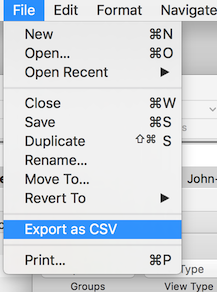
Import from vCard
vCard Editor2 can import a vCard for inserting the contacts to the vCard you are opening.
When you select the "Import from vCard" menu in the file menu. The open file dialog will open.
After selecting a file in the dialog, another panel will open and show the contacts in the file.
Select contacts in the panel and click the "Select" button, then the contacts will be added to the vCard you are opening.

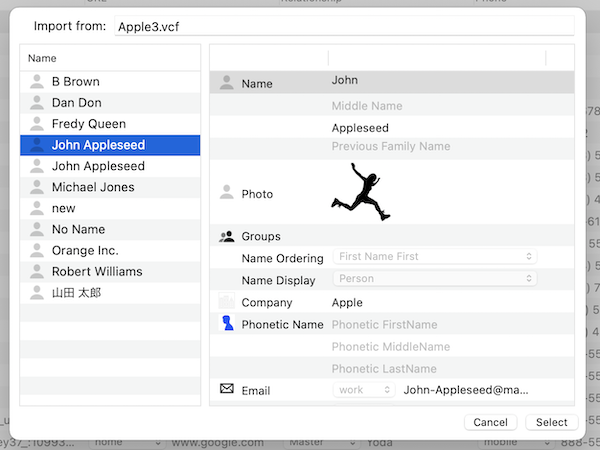
Sorting
Each column has a sort button as below which will help you finding a value in the column.
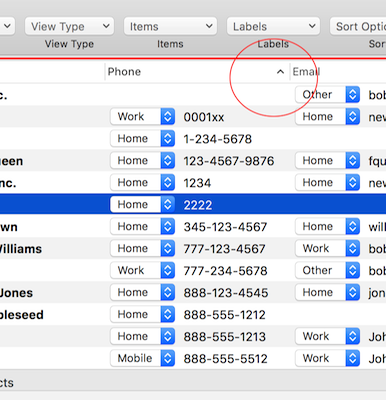
And the "Sort Options" menu in the Toolbar is for changing the way of sort.
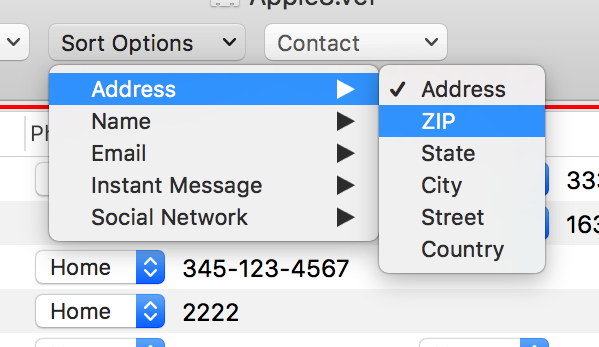
- Name: Name/Firstname/Lastname
- Address: ZIP/State/City/Street/Country/Label
- Email: Email address/domain/username/Label
- Phone: Phone number/Label
- URL: URL/Label
- Social Network: address/service type/username
- Instant Message: address/service type/username/Label
- Relationship: Relationship/Label
- Dates: Dates/Label
- Phonetic Name: Phonetic Name/Phonetic Firstname/Phonetic Lastname
Find&Replace
The FindBar will be shown when you select the Find menu in the edit menu or click the find button in the Toolbar.
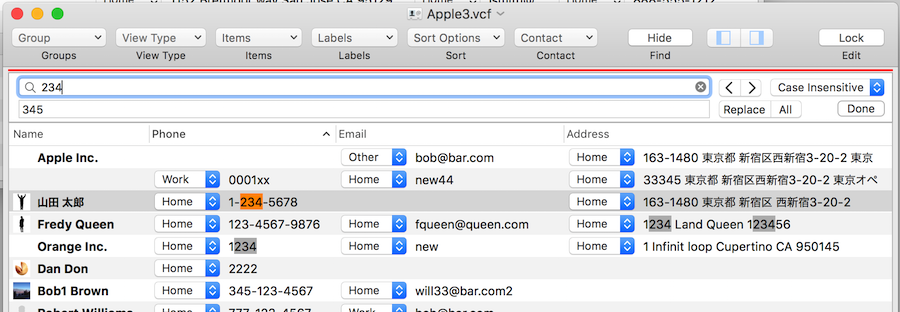
The Find Panel will be shown when you select the "Show Find Panel" menu in the edit menu or type Cmd+Shift+F as a short cut.
This panel shows the search results with selected items and labels, and can replace the string with other string.
The detail is here.
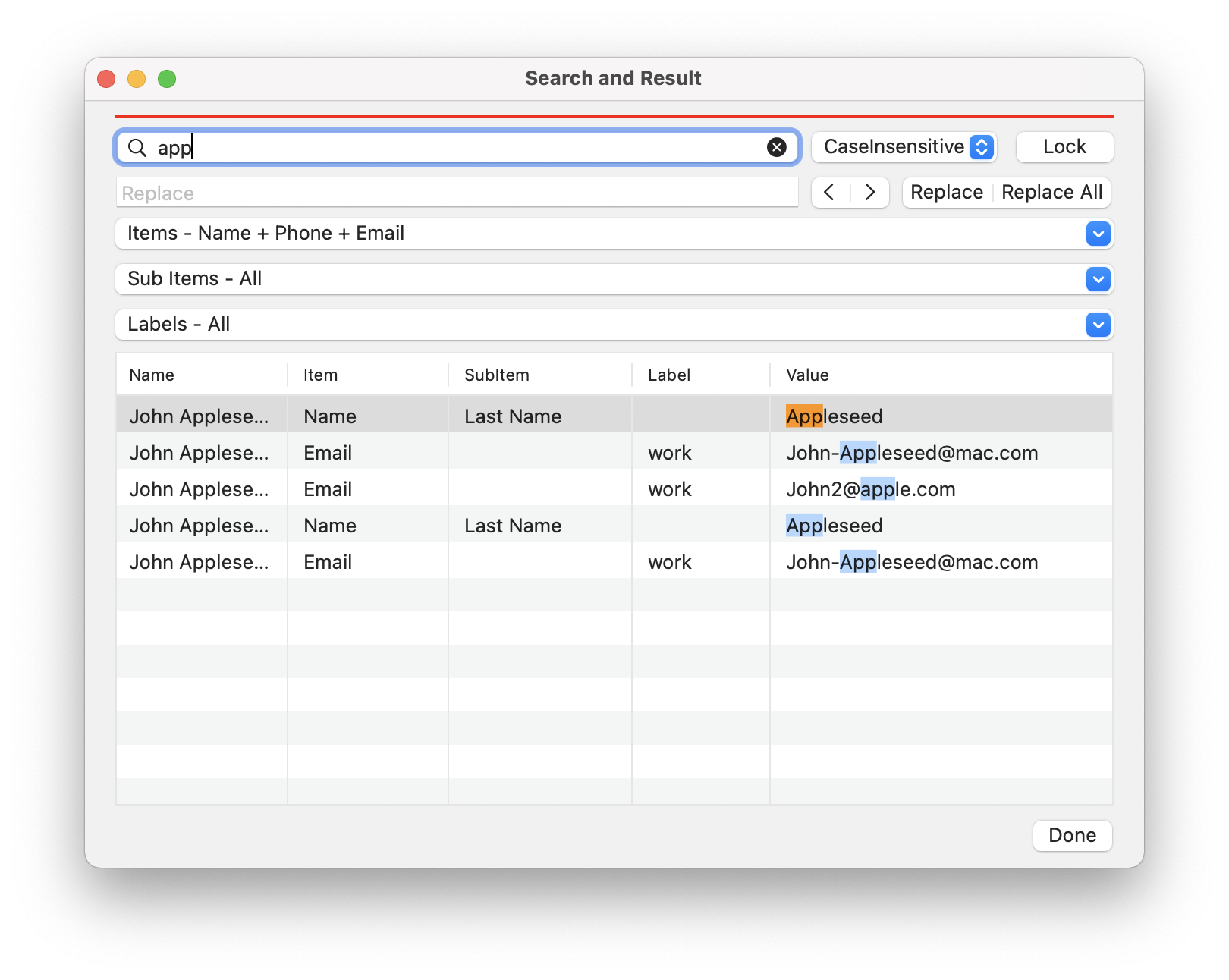
Comparing arbitral two contacts and copy/move between them
The compare panel is for comparing arbitral two contacts in the list.
In the edit mode, you can change the value and move/copy between contacts by drag&drop.
In order to copy the value, dragging value with holding option key.
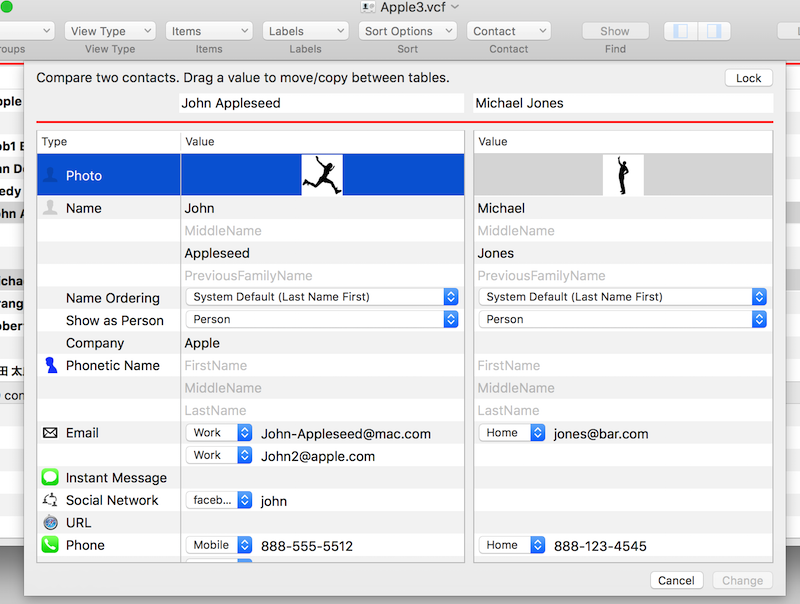
Detachable Contact Info
When the cell in the Name column is dobule-clicked, the Contact Info panel is shown as popover. It shows whole items in the selected contact vertically. The popover is closed automatically when you click the outside of it. However when you drag the outer edge of the popoover, it turns to the normal panel. So it will stay in the desktop until you close it. And you can open the other Contact Info popover and even open the multiple Contact Info panels at the same time. This will bring you the other way of comparing and editing contacts. Also you can copy any items by drag and drop between the Contact Info panels or the main window.

Action and Substitution by a context menu
When you control-click the cell, the context menu will be shown as below. Some cells have a action such as opening a mail message or a map. The action depends on the type of the cell.
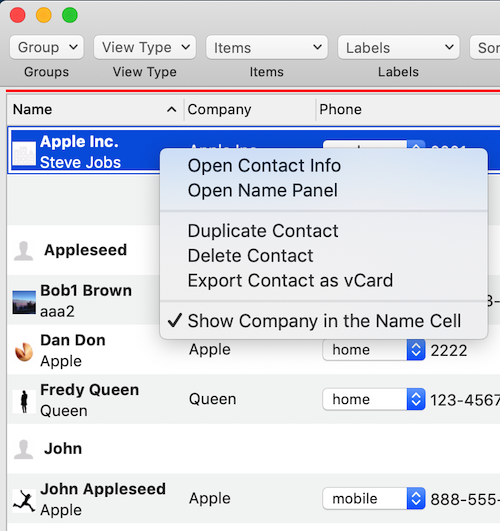
|
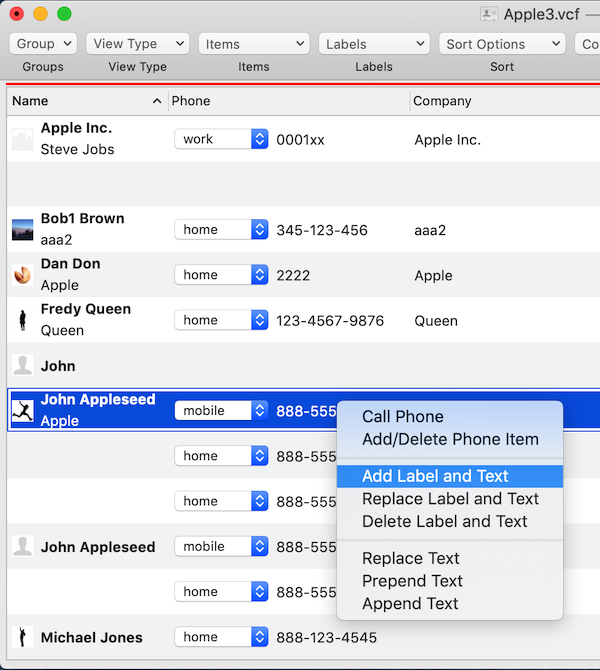
|
If edit mode is off, some edit menus in the context menu will be disabled such as inserting a value or replacing the value in the selected cells.
And if multiple cells are selected, the operation is done for the selected cells.
Input Address
When you double-click the address cell, the address list panel will open. The plus button in the lower-left corner is for adding a new address value.
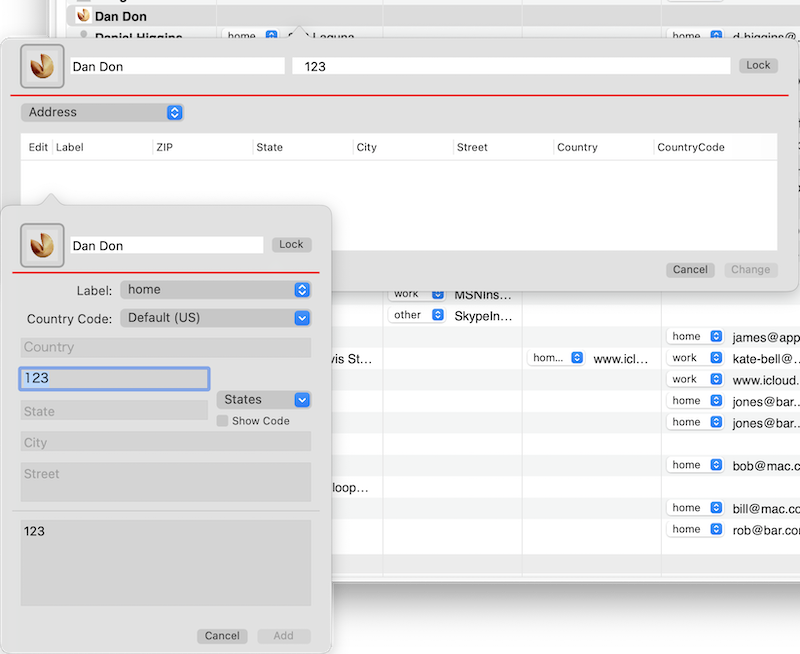
Selecting the Country Code menu enables State pulldown in some countries. You can enter the State name in the State Field by selecting State pulldown.
You can add State pulldown to any country by placing the AddressFormat.json file under the vCard Editor folder in iCloud Drive.
Here is the sample of AddressFormat.json.
Bulk edit function in the selected multiple cells
You can set the same label or value in the selected cells at once.
Select multiple rows, then showing the context menu by control-click or right click, and change the label or value via the context menu. An alert will be shown for making sure the operation. When you select OK, the values of selected cells in the same column will be changed what you enter.
Please note that the operation can be undo by the "Undo" menu in the Edit menu.
The detail is here.

Showing QRCode
vCard Editor2 can show QRCode of the selected contact information, and you can Copy&Paste the image to other documents.

Drag and Drop Contacts
You can drag and drop contacts between vCard Editor2's windows and Apple Contact or Apple Mail.
And when Groups are visible, Drag&Drop can be used to add a member to a group.
You need to click the Edit button before dropping the item.

Register Custom Items
You can register arbitrary information (custom items) in the contact information. You can show the information in the contact row with the name and label of your choice.
Please see here in detail.
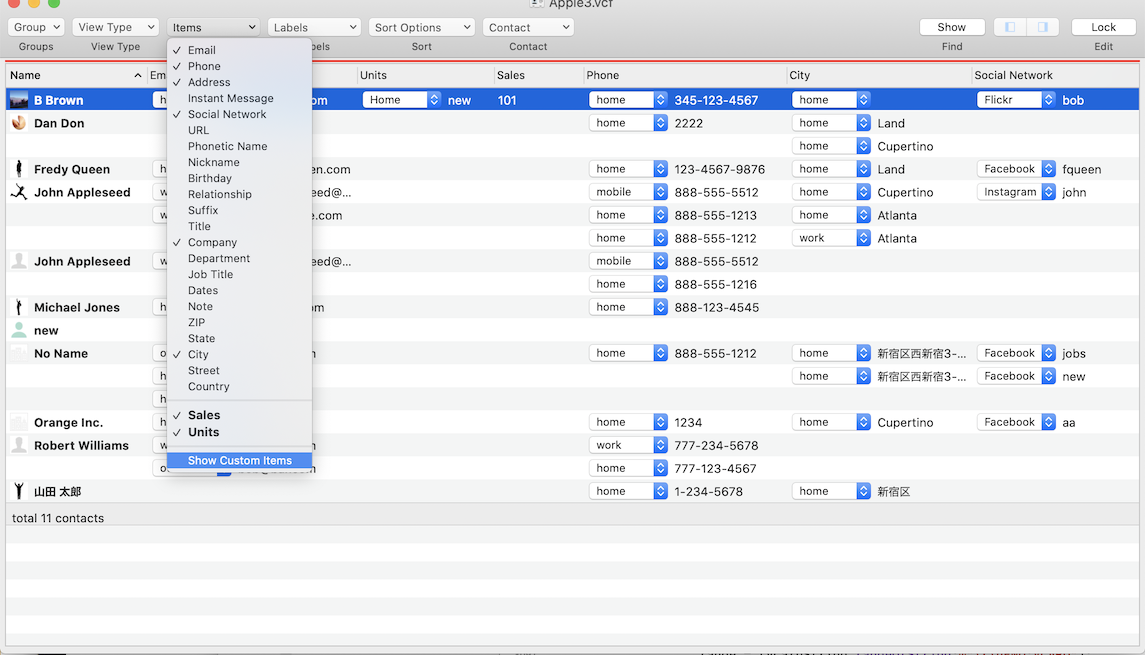
Adding Custom Label
Selecting the "Custom label" in the Navigator menu, the "Custom Label Panel" will open. It is for adding and changin a custom label for each item such as Email, Phone, Address.
Click the plus button is for adding a new label, and click the minus butotn is for deleting the selected label. And dobule-click the label in the table is for changing the label.
And the changing refrects to the AddressBook, can't be undone.
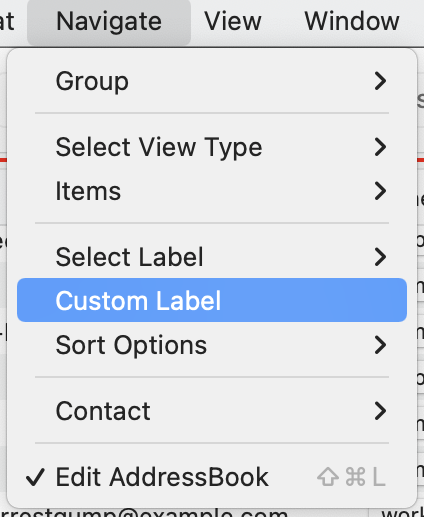
|
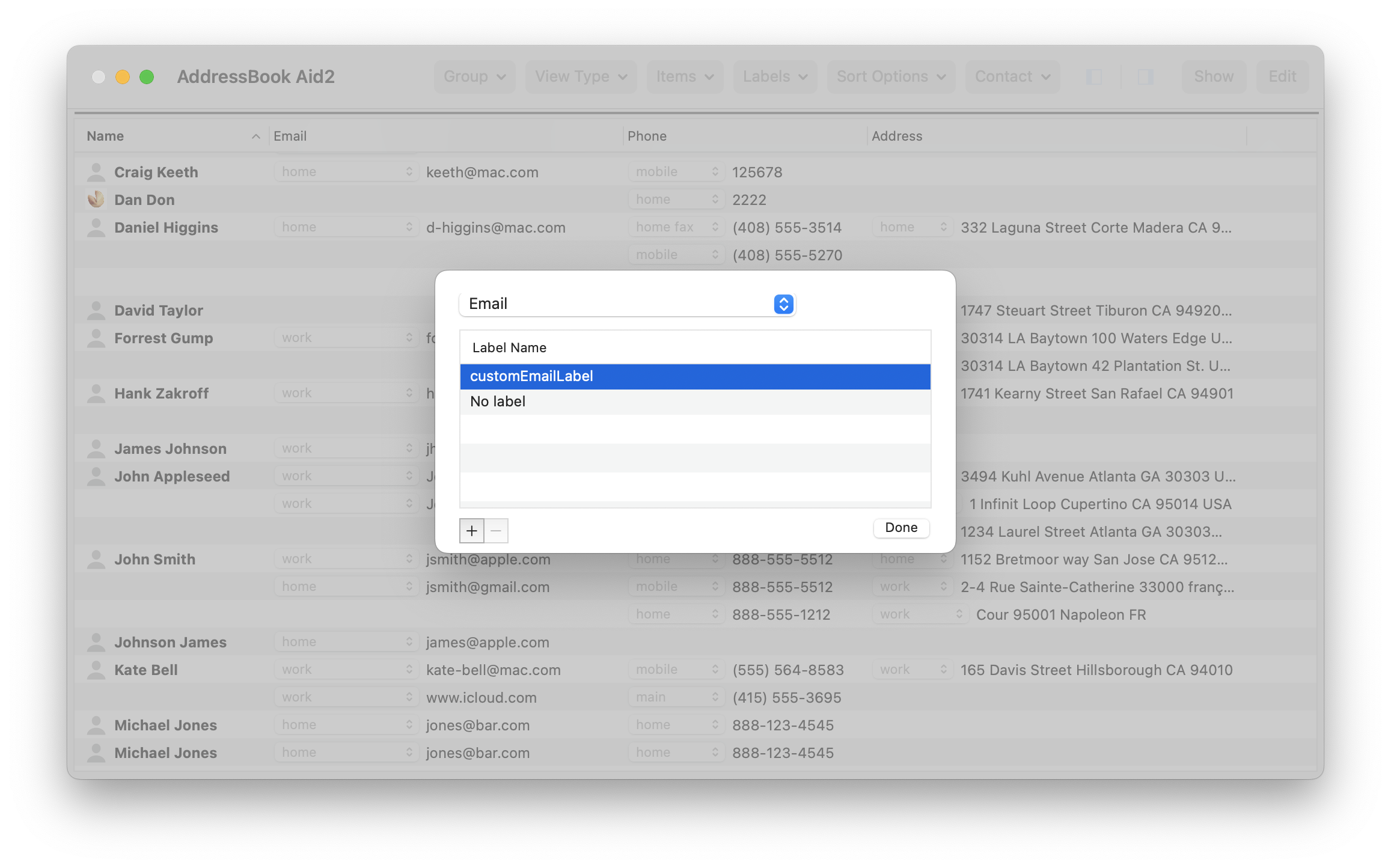
|
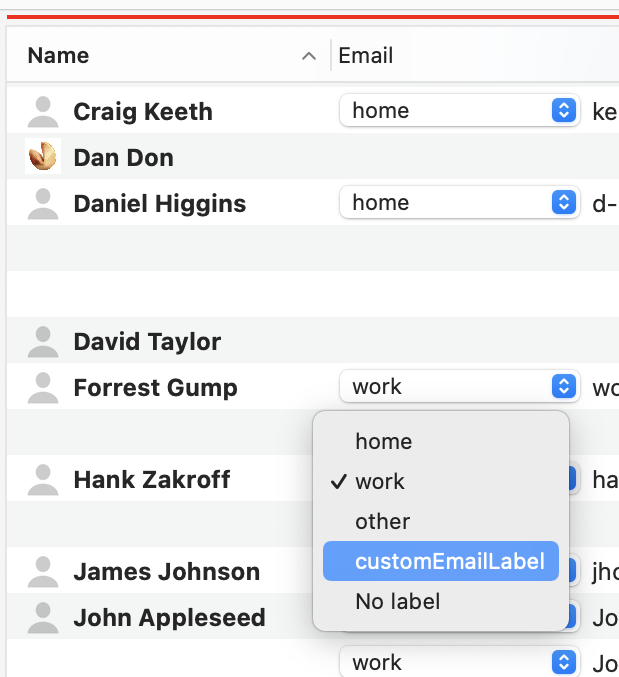
Changing font and size
You can change font and size in the Table.

"Copy", "Copy as CSV" and "Copy as vCard"
When you select the "Copy" in the Edit menu, the items of the selected row in the table is copied to the paste buffer in text format. The text is a collection of strings in which the values for each column and separated by tabs. You can paste it into Numbers or Excel as it is. When you select the "Copy as CSV", the strings in the text are separated by commas. And the "Copy as vCard" menu is for copying the contact of selected row as vCard format.
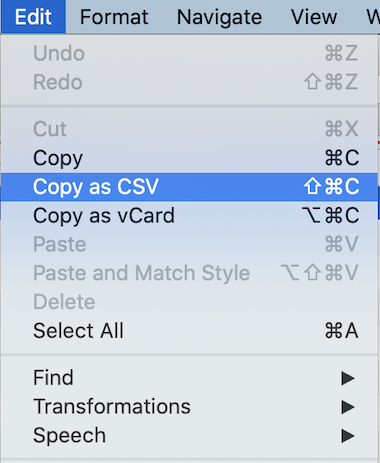
Printing
Select a contact and then select “Print” from the File menu. You can select multiple contacts by cmd-click.
When you select the "vCard Editor2" menu in the print dialog, the configuration pane will be shown for selecting a value to print.

|
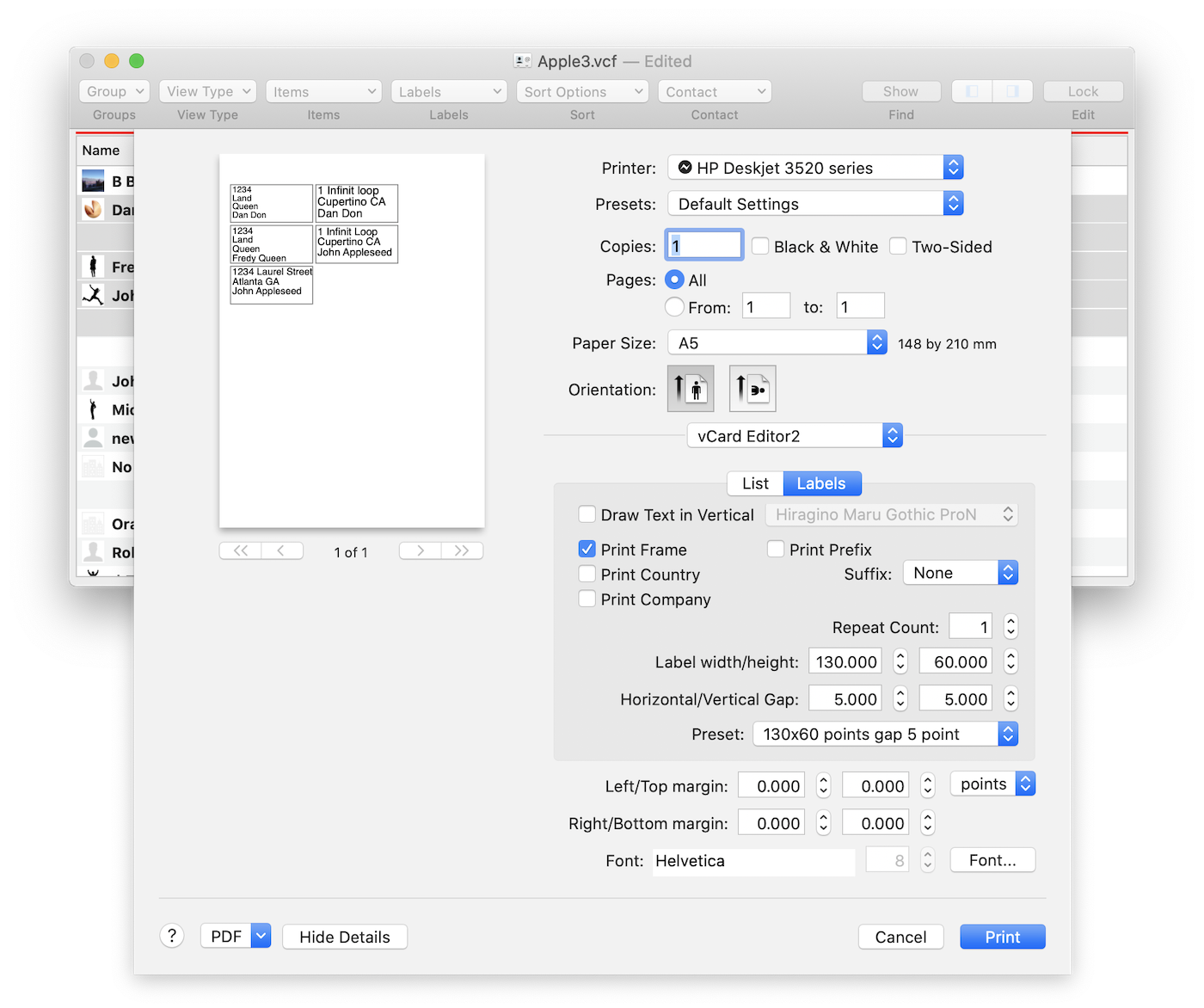
|

Operating system requirements:
vCard Editor2 works in macOS 10.11 and later.
How to Install the trial version:
Double click on the zip file that you downloaded, then the vCardEditor-Trial.app is created.
Uninstallation:
You can just delete this software from the installed folder in order to uninstall this software.

